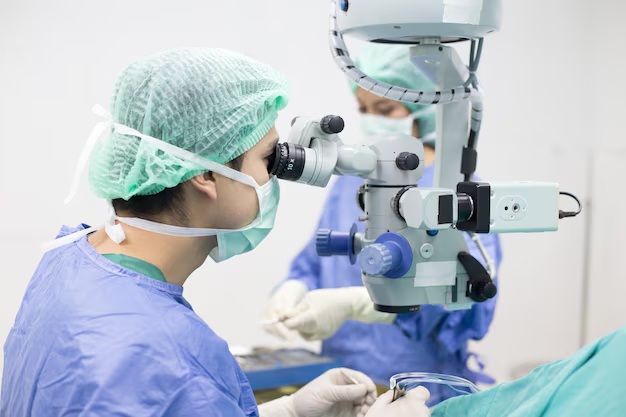Understanding Cataract Surgery: A Step-by-Step Guide
Every year, millions of people benefit from cataract surgery, a procedure that restores vision impaired by lens clouding. Whether you're considering the operation for yourself or helping a loved one navigate their options, it's crucial to understand the process, its preparation, and what to expect throughout the journey. 🕶️ Let's delve into how cataract surgery is performed and explore the facets that surround this common yet significant procedure.
🚦 What Exactly is Cataract Surgery?
A cataract is a condition where the eye's natural lens becomes cloudy, leading to blurred vision. Cataract surgery involves removing the clouded lens and replacing it with an artificial one to restore clear sight. It's a routine procedure known for its high success rate and quick recovery time, making it a popular solution worldwide.
🛠️ The Pre-Surgery Process: Preparation and Considerations
Opting for Surgery
Choosing to have cataract surgery is a personal decision made by evaluating the impact of cataracts on daily life. If vision interference hinders reading, driving, or watching television, discussing surgery with an ophthalmologist becomes a crucial next step.
Pre-Surgery Consultation
Before surgery, a detailed eye examination is conducted to assess the degree of the cataract and overall eye health. During this consultation, the ophthalmologist will:
- Measure the size and shape of your eye
- Discuss lens replacement types, such as monofocal, multifocal, or accommodating lenses
- Address any questions or concerns about the procedure and recovery
Preparing for Surgery Day
Being well-prepared can make the surgery experience seamless. Here are some steps typically followed:
- Medications: You may be advised to stop taking certain medications and start using prescribed eye drops days before surgery.
- Transport Arrangements: Given the post-surgery effects of anesthesia, arranging a ride home is essential.
- Fasting: Fasting might be required for several hours before the operation, typically starting midnight before surgery day.
🔍 Step-by-Step: How Cataract Surgery Is Performed
Understanding the surgical procedure can demystify the experience and alleviate concerns. Here's a look at the standard steps involved in cataract surgery:
1. Anesthesia
Surgery begins with local anesthesia administered directly into the eye, often supplemented by sedatives to ensure calmness and comfort. The area around the eye is numbed so that you won't feel anything during the procedure.
2. Creating an Incision
A tiny incision, often less than 3 mm, is made at the edge of the cornea. This allows the surgeon access to the cataract-affected lens. Advanced laser technology is commonly used to make precise incisions.
3. Phacoemulsification
The most common technique for removing the cloudy lens is phacoemulsification. Here's how it works:
- An ultrasound probe is inserted through the incision.
- The probe uses ultrasonic vibrations to break the cloudy lens into smaller fragments.
- These fragments are then gently suctioned out of the eye.
This step is essential for clearing away the cataract-affected lens.
4. Implanting the Artificial Lens
Once the cloudy lens is removed, the surgeon implants an artificial intraocular lens (IOL) in the same position. The IOL is tailored to correct vision based on pre-surgery measurements, often significantly reducing or even eliminating the need for glasses post-surgery.
5. Closing the Incision
Typically, the incision is self-sealing and doesn’t require stitches. In some cases, where additional stability is needed, specialized sutures might be used.
🌿 After Surgery: Recovery and Care
Immediate Post-Surgery Expectations
Following surgery, patients are shifted to a recovery area where they rest for a short period before being allowed to go home. Common immediate effects can include:
- Slight discomfort or itching in the eye
- Blurred vision as the eye adjusts to the new lens
- Sensitivity to light which usually improves quickly
Home Care and Restrictions
Proper post-operative care is crucial for a smooth recovery. Here’s what to keep in mind:
- Eye Protection: Wear an eye shield or glasses to protect the eye, especially while sleeping.
- Eye Drops: Use prescribed antibiotic and anti-inflammatory eye drops as directed to prevent infection and promote healing.
- Avoid Strain: Refrain from strenuous activities, heavy lifting, and swimming for a few weeks.
Follow-Up Appointments
Follow-up visits with the surgeon are essential to monitor the healing process and ensure that there are no complications.
🧠 Understanding the Risks and Benefits
Benefits of Cataract Surgery
The primary benefit of cataract surgery is improved vision, which can enhance the quality of life significantly. Many patients experience:
- Better distance vision
- Clearer colors and improved contrast sensitivity
- Reduced dependency on eyewear
Risks to Consider
While cataract surgery is generally safe, every surgery carries risks. Some of these might include:
- Infection or swelling
- Retinal detachment
- Increased eye pressure
Being informed and attending all follow-up appointments can greatly reduce these risks.
🔔 Key Takeaways and Tips
To distill the essential points from this guide, here is a summary that highlights practical consumer tips and insights:
- Evaluate the need: If cataracts significantly impact daily life, surgery may be beneficial.
- Discuss options: Different IOLs cater to various needs; choose one that's right for your lifestyle.
- Prepare adequately: Follow all pre-surgery instructions and arrange for post-surgery care.
- Understand the procedure: Familiarity with the steps can ease anxiety and equip you with realistic expectations.
- Adhere to post-op care: Following guidelines is crucial for optimal recovery and minimizing risks.
With these essentials in mind, patients and their families can approach cataract surgery well-informed and prepared for the journey to clearer vision.👀
Successfully navigating cataract surgery involves understanding each step, from preparation to recovery, and recognizing the transformational impact it can have on daily life. By staying informed and adhering to medical advice, you can look forward to restored vision and a rejuvenated quality of life.
